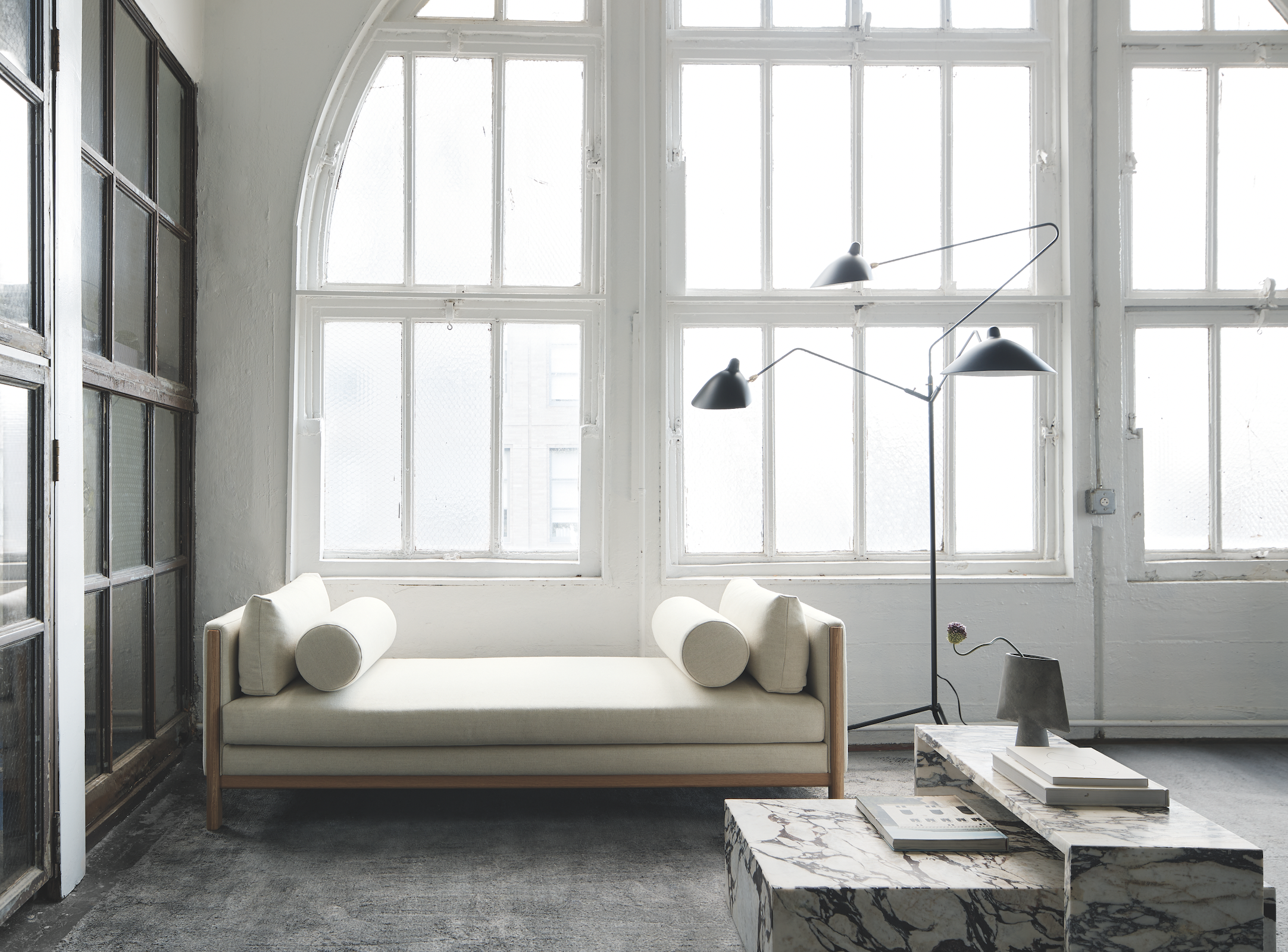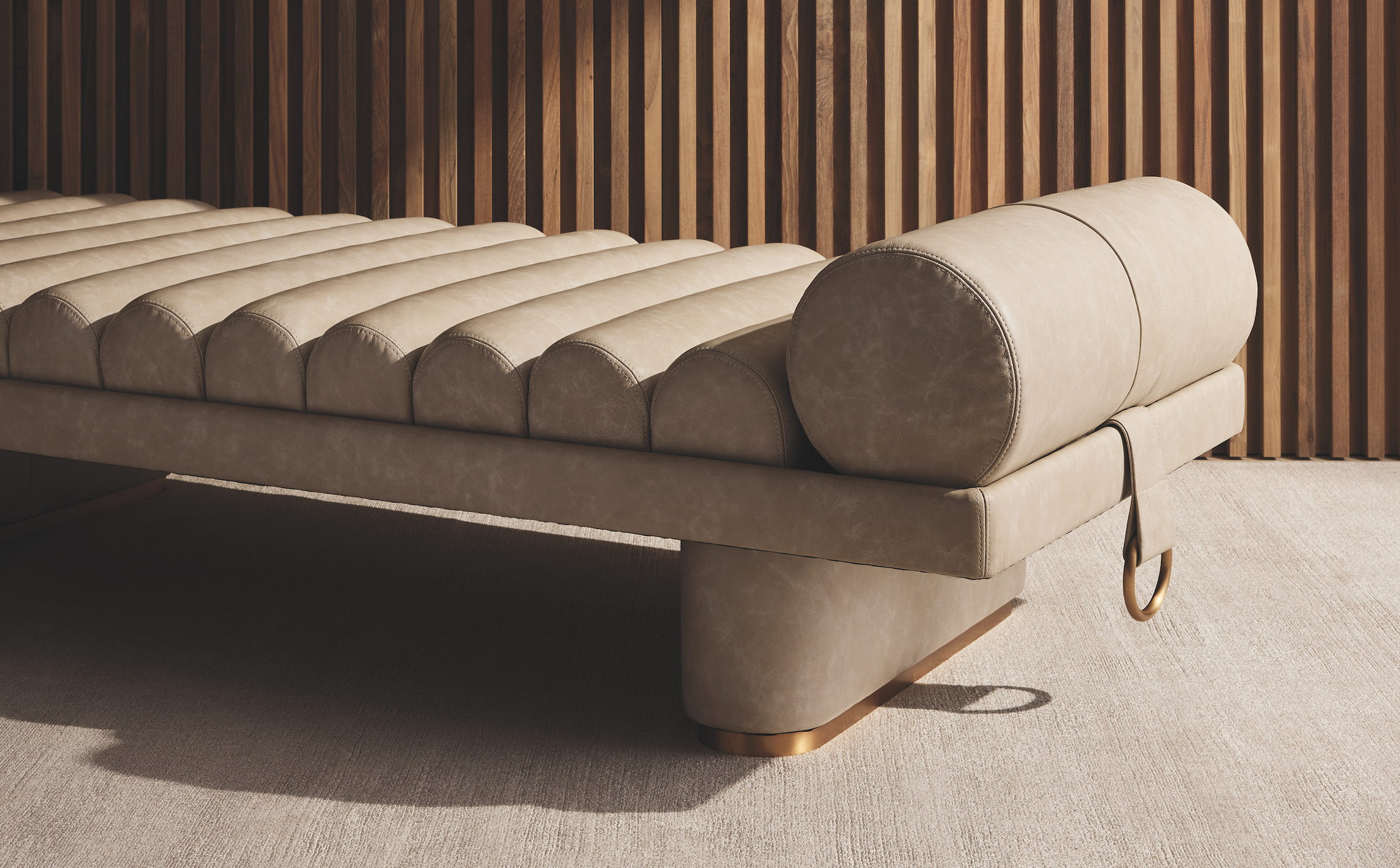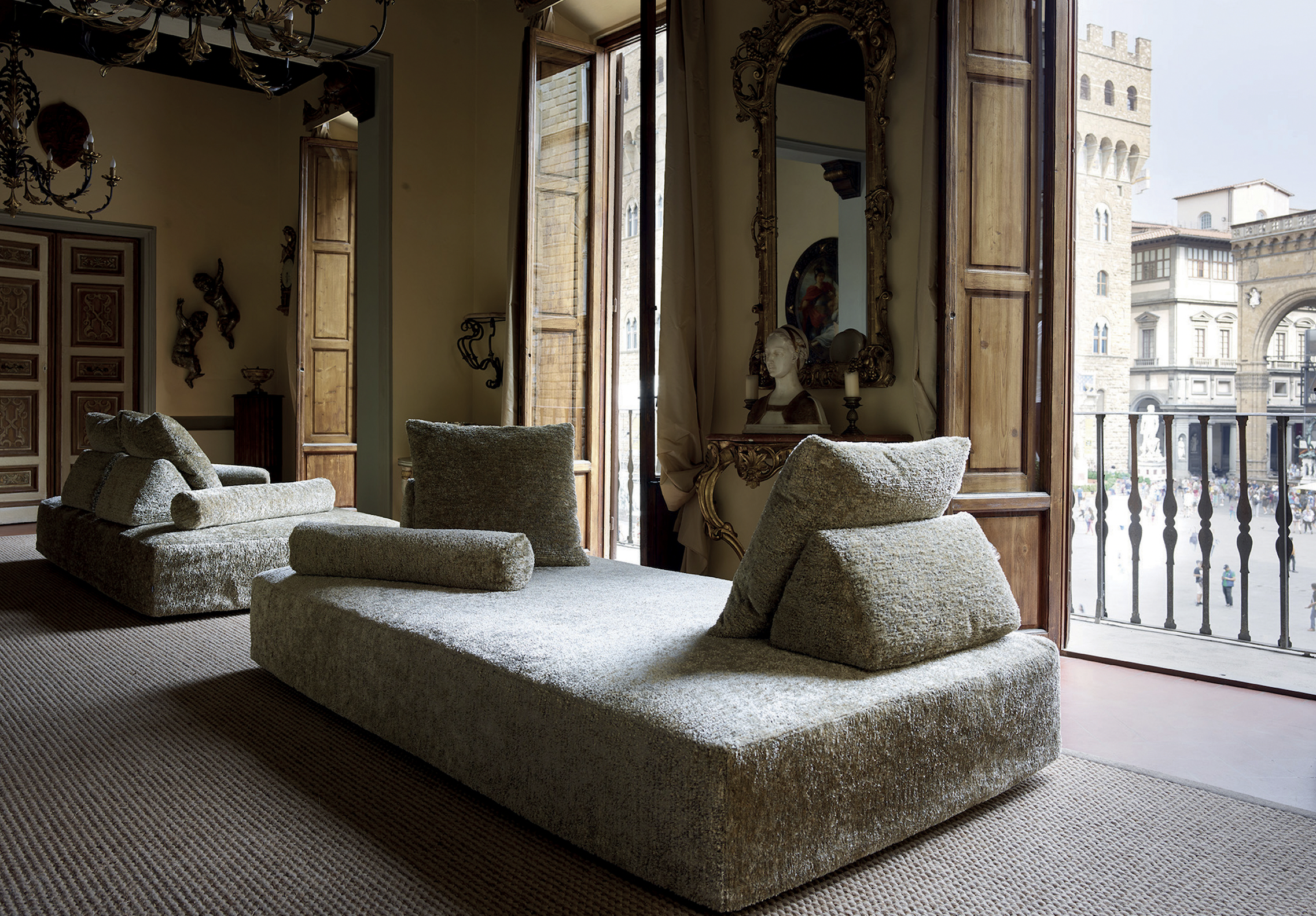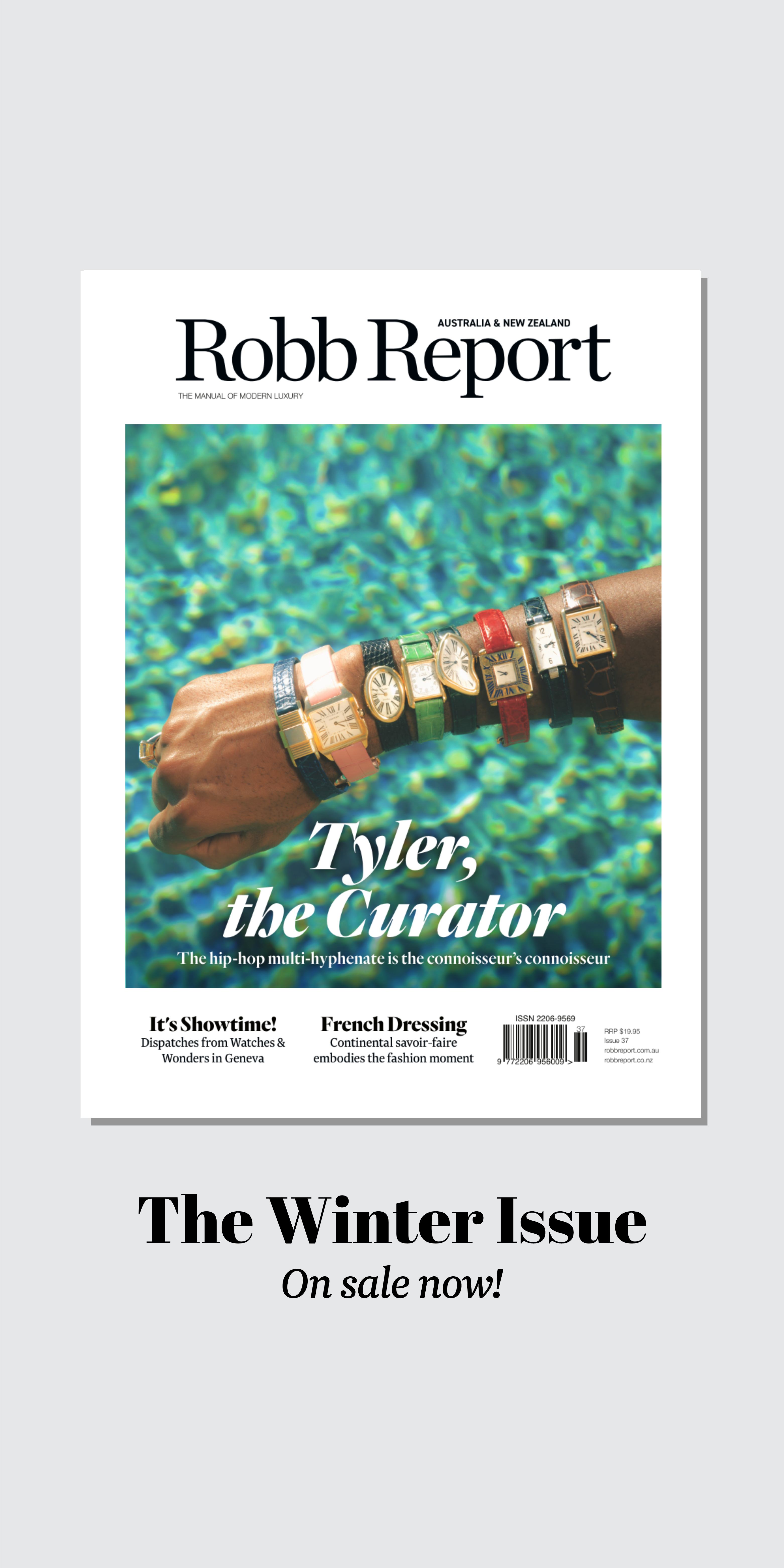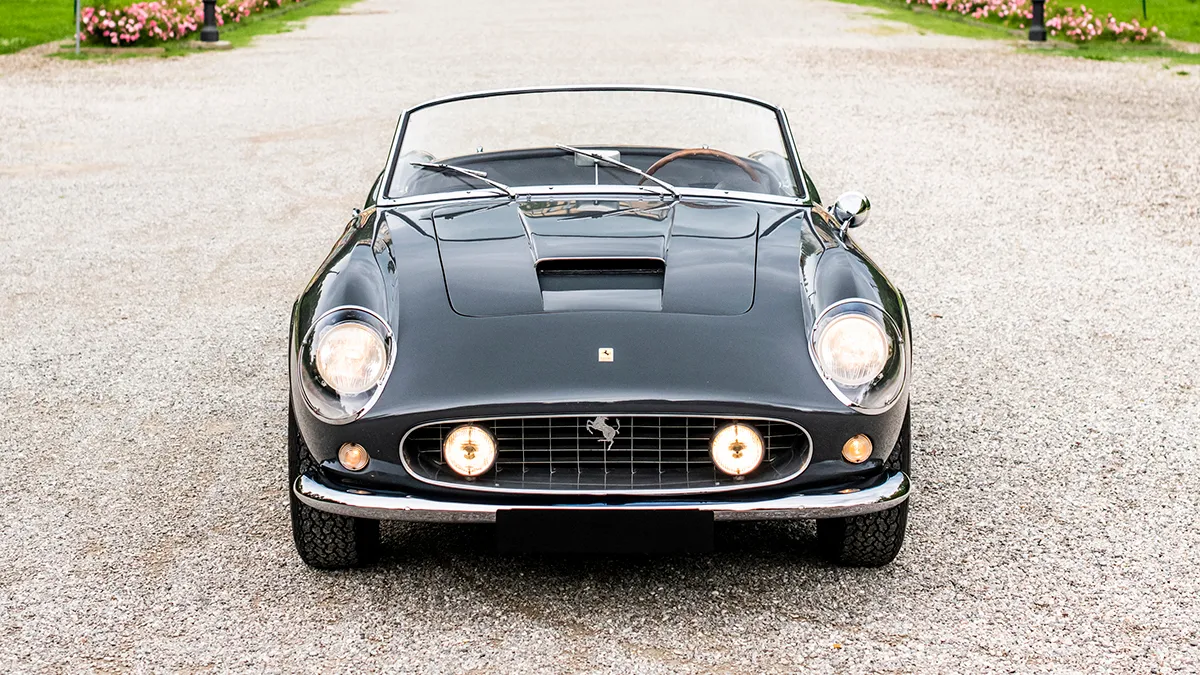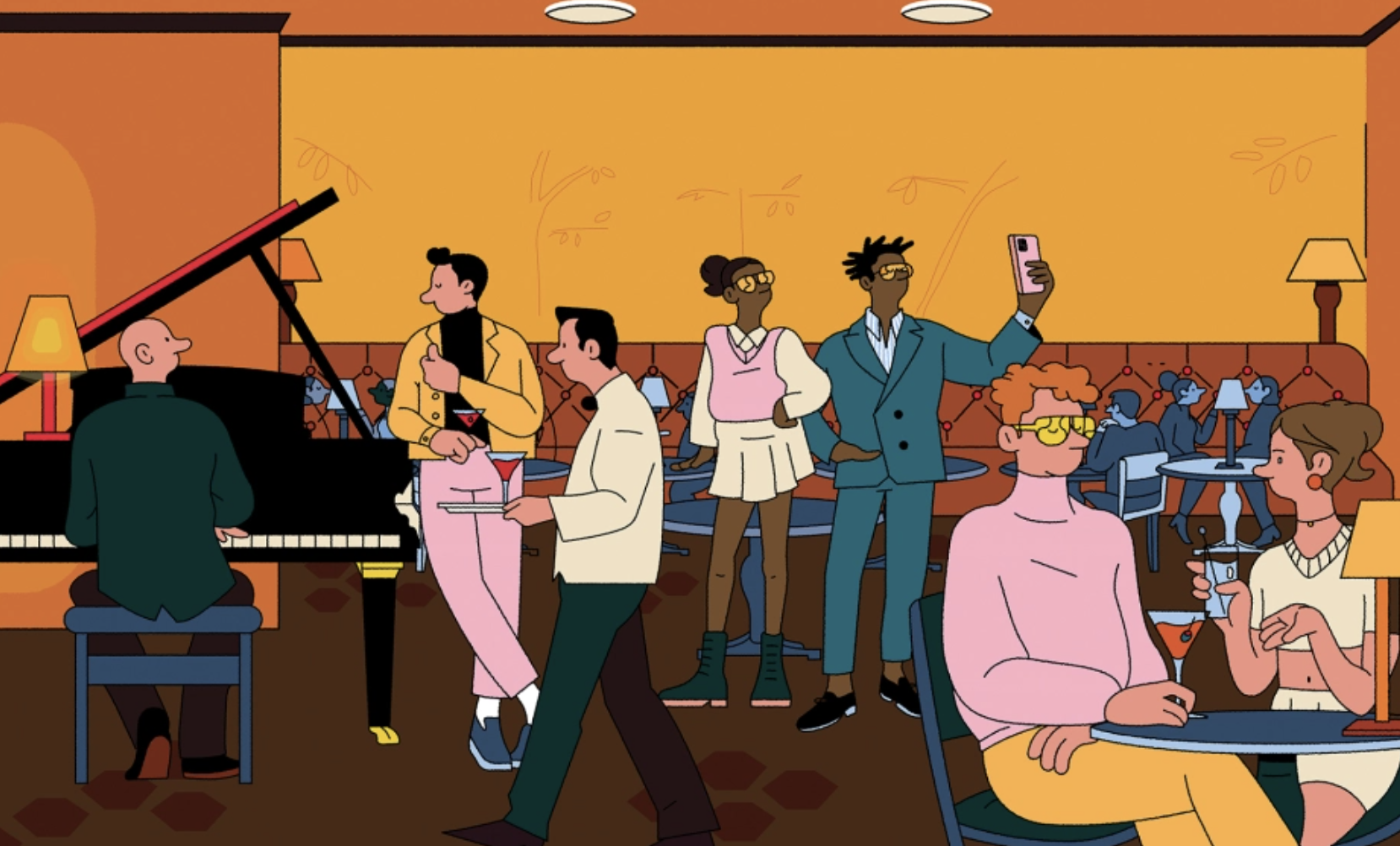
How Millennials Learned To Love Old-Money Aesthetics
Younger generations are giving the penny-loafered, chintz-upholstered old-money vibe a 21st-century reboot.
Related articles
On any given midsummer Saturday night, New York’s Upper East Side is a social wasteland. The neighbourhood’s wealthy habitués flee the city for breezier country homes, leaving their tony stomping ground deserted. Aside from the hum of taxis passing by and the random Pomeranian bark, the streets are all but silent. On a recent July evening, however, rumblings can be heard from a crowd lingering in front of the stately Carlyle hotel. Inside, an earpiece-wearing security guard politely organizes a line snaking through the lobby—a scene more often found outside clubs below 14th Street. They aren’t waiting to hear some mononymous DJ or even to dance; they’re just hoping to snag a table at Bemelmans Bar—the circa 1947 boîte known for piano standards and stiff martinis.
Named after Ludwig Bemelmans, the Madeline author whose whimsical murals adorn the 672-square-foot canteen, the bar is a vestige of Old New York seemingly frozen in time. Waiters in white dinner jackets and bow ties ferry silver bowls of potato chips to every table while a jazz trio plays tunes from the Great American Songbook, just as they have for 75 years. Bemelmans’s consistently gracious service and genteel environs have made it a favourite neighbourhood watering hole for generations of Upper East Siders, from Jackie O and Brooke Astor to the average Park Avenue prince.
The line of this Sunday night, however, isn’t composed of locals roughing it in town for the weekend, though some of them can be found among the bar’s candlelit banquettes. Along with the expected patrons in their Van Cleef & Arpels jewellery and Tom Ford suits, there are Gen Z women taking selfies, a man-bun-sporting dude slipping the pianist a twenty and a hipster carrying a Machado de Assis paperback. They’re all part of a new demographic, coming from downtown, Brooklyn and beyond, that defines such throwback civility as an ideal night out.
Since Bemelmans reopened post-lockdown, there has been a surge of younger clients coming for a taste of bygone Manhattan (and the highly Instagrammable setting). “We never had lines prior to the pandemic,” says Tony Mosca, the Carlyle’s food and beverage director. “Now there are lines out to Madison Avenue on a nightly basis.” The crowds start arriving as early as 3 pm and keep going strong until last call.
“People are able to connect with each other a lot more in this environment than, say, a nightclub,” Mosca observes of the bar’s popularity after months of social distancing. And while Bemelmans has emerged as the city’s hottest new (old) spot, similar influxes have been reported at the St. Regis’s King Cole Bar and the Plaza’s Palm Court, two other haunts of the Social Register set.
Despite the threat of recession and all the talk of inflation’s havoc, wealth—or at least the look of it—is on the rise. And not just any kind of wealth: blue-blooded, Ivy-educated, Newport-summering affluence. Sneakers are being swapped for penny loafers, modernist interiors are being swaddled in chintz and chinoiserie, Hamptons vets are decamping to Palm Beach. All the traditional trappings of WASP-dom, a sensibility that has been upheld by generations of the one percent of the one percent, are striking a chord with many who don’t know Andover from Exeter and couldn’t care less. It’s about the image of affluence, not the cultural baggage.
The Gen Z influencers of TikTok have dubbed it #oldmoneyaesthetic, a term that began trending last spring and that, together with the hashtag #oldmoney, has garnered over 1.8 billion views as of writing. These digital arbiters have devoted countless videos to the topic—primarily stock-photo montages of boiserie-clad châteaux, manicured tennis lawns, models in crisp white shirts and so on—celebrating it as the ultimate lifestyle goal. Often, this world is contrasted with what has been deemed “California rich”: a version of affluence quickly amassed and oft associated with Hollywood glamour. “Why be California rich,” @eileen_darling asks, “when you could be Connecticut rich?”
This strain of discreet wealth has never really been out of fashion—it’s not like Ralph Lauren was ever hurting—but since the pandemic, it has entered the zeitgeist anew. As the adage goes, everything comes back around eventually. So if you’d written yourself off as a fuddy-duddy, we have good news: Your time is now.
The concept of “old money” has been around far longer than polo matches and prep schools, but the phrase really entered the conversation during the late 19th century. The industrial revolution saw merchants and tradesmen attain wealth with unprecedented speed, amassing fortunes to rival those that had been built, and handed down, over generations. Particularly in America, the Puritan tastes of prominent Mayflower descendants were starkly contrasted by the baroque excesses of arrivistes—a conflict central to HBO’s The Gilded Age, which, uncoincidentally, has brought this cosseted class war to prime time.

Illustration of golf-course style Illustration by Marcos Montiel
In Mrs. Astor’s day, the line between old and new money was as clear as an Edison bulb. Now, however, things are considerably murkier. The Gilded Age’s gatecrashers—Vanderbilts, Rockefellers, Morgans—are today’s gatekeepers, not to mention that cryptocurrency can make even tech fortunes look quaint. (The very concept of this article, it should be noted, is decidedly not old money. Such wealth is a bit like Fight Club—the first rule is you don’t talk about it.)
“Those times are gone,” says Nick Mele, a Palm Beach–based photographer and lifelong Newport summer-er who documents the modern beau monde in the tradition of Slim Aarons. “When we talk about old money, we’re not talking about where your money comes from or how old it actually is. We’re talking about a mindset.” Where you went to school or what clubs you belong to may still have cachet, but they’re not the price of entry. “We’re in a meritocracy for the most part,” he continues. “It’s about an appreciation for traditional values.”
That phrase may often be thrown out as a dog whistle by conservative politicians, but when it comes to this new embrace of old aesthetics, it’s used in a literal sense. “Old money” now has less to do with the origins of one’s bank account and more to do with what its contents are spent on. There are countless TikToks devoted specifically to this concept; many are apt (Brunello Cucinelli, Hermès, horses) while some have a questionable definition of what constitutes sophistication (Banana Republic, reading, continental breakfasts).
“Some people think it’s just about one thing: the money or the brands or the look,” says DW, a self-described European teen behind @oldmoneyaddicted who declined to provide his name, exact age or geographic location. He claims to have been born into a family with a long, well-documented history, which inspired him to share his insights on old money with his 68,900 TikTok followers. “It’s a lot more: your education, how you behave, how you may go unnoticed with a Patek Philippe on your wrist… Being a gentleman has meaning.” At least as far as style goes, the internet’s general consensus is: Old money is unaffected understatement.
Edith Wharton, who could be considered the Robin Leach of her day, spells out this idea in 1897’s The Decoration of Houses, a kind of Victorian equivalent of “how to get the look” TikToks. Written as a riposte to “the vulgarity of current decoration” employed by parvenus, the book traces interiors of the wealthy back to the Renaissance making a case that good taste is about certain timeless principles: proportion, practicality, quality.
“The simplest and most cheaply furnished room (provided the furniture be good of its kind, and the walls and carpet unobjectionable in color),” she writes, “will be more pleasing to the fastidious eye than one in which gilded consoles and cabinets of buhl stand side by side with cheap machine-made furniture, and delicate old marquetry tables are covered with trashy china ornaments.”
Mimi McMakin, an interior designer and fourth-generation Palm Beach native, sums up the look as “clean, very simple and looks good with a tan.” McMakin, who along with her daughter Celerie Kemble, recently renovated the Colony Hotel—a much Instagrammed rhapsody of wicker, de Gournay palms and flamingo pink that has become the Floridian answer to Bemelmans—seconds Wharton in that old-money decor isn’t so much a specific style as it is an ideology.
“Most important of all is comfort,” she says. Rattling off a list of quintessential elements—tailored slipcovers, Portuguese floor tiles, lacquered coffee tables—she stops herself mid-sentence. “Did I mention down? Down! Down! We are known for the sound when you sit in one of our pieces: oomph. That’s luxury.” Face it: A plush armchair will always be more inviting than some mid-mod design in plywood and polycarbonate.
Which brings us back to the aesthetic’s governing principle: Wealth whispers. In fashion, this rule translates to relatively simple designs—oxford-cloth button-downs, blue blazers, Shetland-wool sweaters—that, more or less, have remained unchanged since they first turned up on Ivy League greens a century ago. “It’s always going to be classic,” says Zachary Weiss, a 30-year-old branding consultant and bon vivant whose 38,100 Instagram followers tune in to see his patchwork madras and “go to hell” pants living the good life from Antibes to Aspen. “You’re not going to look back at a photo and regret putting on this outfit,” he continues, describing the style’s enduring appeal. “There’s this idea of quiet luxury that is emerging with a younger set.”
Even fashion’s cool kids have taken to tinkering with the staid codes of preppy style. For spring 2022, Miuccia Prada’s Miu Miu collection went viral with low-slung chinos, pleated skirts and cable knits slashed to dangerously short lengths. For fall, Gucci’s Alessandro Michele riffed on tweedy balmacaans and sweater-vests, while Celine’s Hedi Slimane gave polo coats and Fair Isle sweaters a dose of punk-rock irreverence. Thom Browne, fashion’s most dedicated preppy, took subversion to the extreme in his most recent collection, with boys in repp ties, grosgrain jockstraps and ladies-who-lunch bouclé skirt suits—a look that one imagines wouldn’t fly at any country club, except maybe one on Fire Island.
“We’re seeing a resurgence of what I would call neo-preppy,” says Justin Berkowitz, menswear director at Bloomingdale’s. “It’s not the classic you would have read about in The Preppy Handbook.” He points to designers Mike Amiri and Rhude’s Rhuigi Villaseñor, who are cross-pollinating canonical designs such as rugby shirts and varsity jackets with the swagger of streetwear. While preppy style makes a comeback almost every 10 years, Berkowitz notes that “what’s more interesting about this iteration is that we’re seeing a more diverse ideology incorporated into [the classics].”
As a result, people who once dismissed Ivy style as a white-bread uniform for upper-crust bores are reappraising it. Against all odds, old-school might actually be cool. One of New York nightlife’s buzziest recent openings was the Nines, a downtown approximation of Bemelmans (complete with baby grand and martini sidecars) that replaced a former see-and-be-seen spot frequented by the fashion pack. Even if the gilt ceiling is wallpaper and the red-velvet upholstery skews bordello, the Nines has proven that scenesters can get into Cole Porter. Paradoxically, Weiss says this shift has been most apparent at nightclubs of the disco-ball and DJ variety. “An ‘old money’ look will get you in much faster than, you know, a bunch of Balenciaga,” he says of the most discriminating door policies. “At one point in my life, if I showed up in my normal look, they would be like, ‘No way, nerd.’ Now, it works.”

Casual style illustration Illustration by Marcos Montiel
Lockdown’s closures and social distancing provided prime conditions for old money’s preferred hobbies to find a new audience. Research firm NPD found that last year’s sales of golf-club sets in the US—a good indicator of new players taking up the sport—increased 37 percent year-over-year, and a study of golfers with an average age of 30 showed that the number of rounds played by younger people reached a record high. Similar upticks have been reported in tennis and in sailing, which for the only year in over a decade saw an increase in first-time boat buyers.
Accordingly, the popularity of yacht and country clubs has boomed. The National Club Association, a lobbying group representing 420 private clubs, including such pedigreed institutions as the Everglades and Winged Foot, has found that the number operating at full membership more than doubled since the pandemic’s onset. In moneyed locales across the country, there are tales of couples who, two years ago, would’ve been a shoo-in at any club but now have been wait-listed everywhere. Although the NCA doesn’t track the age of club members, the group’s president, Joe Trauger, reports that at his own Washington, D.C., club, “demographics have definitely been getting younger, and that’s something we’re seeing emerges as a trend in quite a few places.”
The life of leisure speaks to many who took the pandemic as an opportunity to reconsider their relationship with the office. As Weiss observes, “these clothes, this imagery show that you live beyond the workplace.” The Great Resignation’s mass exodus from conventional careers—a recent McKinsey survey estimates that 40 percent of workers are considering quitting their jobs—makes conspicuous enjoyment of the finer things, or what the kids call self-care, less taboo. Hustle culture has given way to pleasure culture.
A similar reassessment happened at home. Lockdown life made people realize they want their interiors to be a sanctuary, but not one so monastic that they can’t actually live in it. “If you have an all-white room, you cannot put a picture of your dog out. Heaven forbid that there’s a magazine or book on a table,” says Bunny Williams, a Sister Parish protégé revered for translating “traditional” to today. Unlike the Scandi-minimalist style that has dominated popular design in recent years, old-money decor accommodates life’s messiness.
“People think that it’s stuffy,” says Miles Redd, a designer who marries WASP-ish taste with a punchy colour sense that would make Wharton blush. “It is all comfort- and practicality-driven: Persian rugs hold up and don’t show dirt, as does chintz; canopied beds keep out a draft and are cozy to sleep in.”
Such pragmatism is a side effect of generational wealth’s dirty little secret: “The WASP world, it was old money,” Williams reflects. “But, a lot of the time, that money didn’t last.” Houses and furniture were often inherited; the spare funds to redecorate, however, were not. So Granny’s sofa got a slipcover instead of being replaced, the old oak floors were painted rather than refinished—layers were added, but nothing got tossed.
Old money’s thriftiness makes the style surprisingly democratic and, particularly for a generation that has inherited only a planet in decline, sustainable. Williams says that antiques dealers she knows have had their best year ever, noting that younger people are now a fixture when she goes antiquing in Connecticut or Atlanta. Redd, too, reports that his younger clients are getting into serious collecting, buying at auction or at Masterpiece, TEFAF and other fairs. “The bottom line is: Things made in the 18th century have craftsmanship you don’t see today,” he says. “And, if you are clever, you can get it for a lot less than something new.”
“In Newport, a beat-up old beach car is appreciated more than a shiny new Porsche or Range Rover,” says Mele, the photographer. To him, the difference between old and new money is embracing cracks in the walls and chips in the china. “There has been a real trend for everything to appear perfect, especially with Instagram. Everybody wants to put forth this idea that their lives are pristine and there isn’t a pillow out of place. That really wasn’t the old-money aesthetic.”
Richard Thompson Ford, a Stanford University law professor and author of Dress Codes: How the Laws of Fashion Made History, suspects that this embrace of the old school is partly a reaction to the fast fashion and influencers that have proliferated online.
“On the one hand, there’s snobbery involved,” he says of the patrician concept of a “proper” way of appearing. “On the other hand, there’s arguably a critique of the crass overconsumption that we might associate with the Kardashians—that is maybe not so bad.”
Casual was the status quo even before the pandemic, but, especially after the forced sweats-and-sofa routine, formality has novelty. “Menswear was dominated by streetwear for the past, say, 10 years; we’re starting to see that idea change,” says Berkowitz of Bloomingdale’s, noting that customers are increasingly spending more on polish, figuratively and literally. “We’ve seen a huge resurgence of dress shoes… loafers are becoming cool.” Even among hoodie devotees, there’s an urge to get spiffed up and go out on the town.
“There are so many places in New York where you can eat, but there are very few where you can actually dine,” says Angie Mar, chef and owner of Les Trois Chevaux, an intimate West Village restaurant that tips its toque to Lutèce, Le Cirque and others of that ilk, places celebrated as much for their well-heeled clientele as for their haute cuisine. Though Mar rose to fame with burgers and chops at the Beatrice Inn, when it came time to reopen post-lockdown, she decided to change tack and “bring a bit of glamour back to the city.”
Despite its quintessentially downtown location, Les Trois Chevaux is distinctly uptown in spirit. A chandelier salvaged from the old Waldorf Astoria, a discreet Picasso lithograph and arrangements by one of Anna Wintour’s preferred florists set the stage for prix fixe menus, starting at around $380, showcasing frog’s legs mousseline and hen-and-lobster ballotine—the kind of exceptionally complex French cooking that even French chefs have mostly ditched for more egalitarian fare.
Similarly, the Grill, occupying the old Four Seasons space at the Seagram Building, has brought back such midcentury indulgences as prime rib carved tableside, lobster Newberg and baked Alaska. In Los Angeles, Horses has reinvigorated a nearly century-old Sunset Boulevard staple with the clubby, put-it-on-my-tab ethos of socialite favourites Swifty’s and 21. At a recent meal there, a server described one diner’s fish as “a 1980s country club revived.”
It’s not just the food that’s gussying up: Les Trois Chevaux is one of numerous restaurants nationwide that have reinstated dress codes. Where jacket requirements could be perceived as an effort to keep the riff-raff out, Mar sees it as a way of reminding diners that a great meal isn’t just about eating. “It’s an experience,” she says. “Dining should not be any different than going to the opera.”
In interviews for this story, manners repeatedly came up as the utmost defining feature of old money. While politesse is certainly an admirable quality—and, yes, it would be nice if everyone still dressed for the opera—who decides what is impolite? Mele recounts a memory of his grandmother, Newport grande dame Oatsie Charles, at dinner one evening, lecturing his brother on the importance of manners while snatching food from his plate and eating it with her hands: “My brother looks at her and says, ‘Granny, what the hell?’ and she goes, ‘Not table manners!’” The rules aren’t so straightforward.

An illustrated dish Illustration by Marcos Montiel
Jason Jules, co-author of Black Ivy: A Revolt in Style, which traces the evolution of preppy style among Black Americans, observes: “We all use these words like ‘elegant,’ ‘sophisticated’… In the wrong hands, those words are used to judge us, classify us and divide us.” Given that this world has, historically, been the purview of white Anglo-Saxon Protestants, it’s a slippery slope from the “right” shoes or shirt to, as Jules says, “you need to have straight hair, to have perfect teeth, to have light skin, to be beach blond.”
“The old-money aesthetic occupies a powerful, symbolic place in American culture,” Ford says of the tendency to romanticize the look. “There’s a nostalgia for a more innocent past…[to] imagine what it would be like to live as a privileged person at a period of time when America’s influence and moral authority were unquestioned—that’s not right now.” Of course, that idealistic picture was just a veneer even then. Today, in light of social-justice movements such as Black Lives Matter, it can be hard to reconcile the resurgence of old-money aesthetics with the moment in which we’re living. It’s especially surprising that Gen Z—the most politically correct generation yet—is so enthusiastically teeing up for croquet.
While one suspects that very few (if any) #oldmoney TikToks are created as conscious political commentary, there’s an implicit statement in virtually storming this rarefied club. That the club has, historically, been open exclusively to straight white conservative elites isn’t a deterrent—adapters aren’t trying to emulate the Mayflower Society, just taking their look and running with it. “We all know it’s the language of the establishment,” says Jules. “But we all want to be able to access that on our own terms.”
In some respects, this return to the traditional can feel like a product of “woke” fatigue. It’s not that old-money aesthetics fly in the face of political correctness; it’s rather that we’re all too tired—from the pandemic, from politics, from the pressure not to offend—to get hung up on whether tennis sweaters or delftware are problematic. Woke culture can, in its own way, be as restrictive as Emily Post. “I’m speaking as a Democratic, Asian American woman, single business owner who has no backing, and I’m into this,” Mar says of her decidedly expensive taste. “Why feel guilty about it?”
People just want to enjoy the pleasures that old money affords, and who can fault them? There’s a reason why this look has stuck around for so long: It’s pretty objectively nice. “Maybe it’s just fun to raid Granny’s wardrobe,” says Jules, dismissing concerns about the politics of it all. Regardless of race or class, he says, “there is only one right way to eat an oyster.” Mrs. Astor surely would agree.
Subscribe to the Newsletter
Recommended for you
Ode to Oasi
Ermenegildo Zegna wrote the book on dapper Italian style. Now, a new coffee-table tome pays homage to its greatest creation—one that, hopefully, will endure long after the brand is gone.
By Brad Nash
June 25, 2024
Everybody Loves Naomi
Fashion fans adore her. And so do we. Lucky, then, that a new exhibition is paying homage to the undisputed queen of the catwalk.
By Joseph Tenni
June 22, 2024
You may also like.
By Josh Bozin
24/07/2024
You may also like.
5 Lounge Chairs That Add Chic Seating to Your Space
Daybeds, the most relaxed of seating solutions, offer a surprising amount of utility.
Chaise longue, daybed, recamier, duchesse brisée—elongated furniture designed for relaxing has a roster of fancy names. While the French royal court of Louis XIV brought such pieces to prominence in fashionable European homes, the general idea has been around far longer: The Egyptian pharaohs were big fans, while daybeds from China’s Ming dynasty spurred all those Hollywood Regency fretwork pieces that still populate Palm Beach living rooms. Even Mies van der Rohe, one of design’s modernist icons, got into the lounge game with his Barcelona couch, a study of line and form that holds up today.
But don’t get caught up in who invented them, or what to call them. Instead, consider their versatility: Backless models are ideal in front of large expanses of glass (imagine lazing on one with an ocean view) or at the foot of a bed, while more structured pieces can transform any corner into a cozy reading nook. Daybeds may be inextricably linked to relaxation, but from a design perspective, they put in serious work.
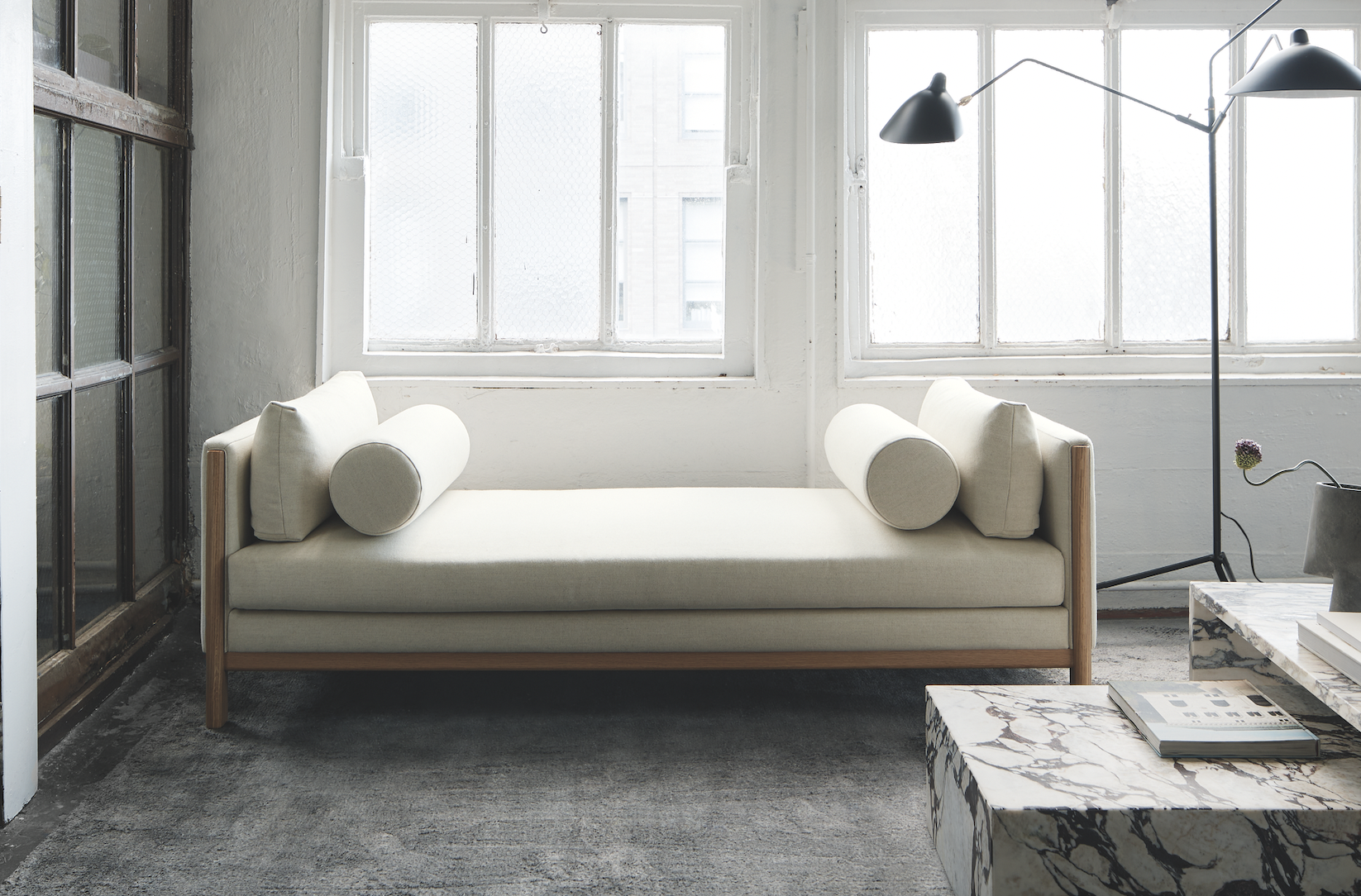
Emmy, Egg Collective
In designing the Emmy chaise, the Egg Collective trio of Stephanie Beamer, Crystal Ellis and Hillary Petrie, who met as students at Washington University in St. Louis, aimed for versatility. Indeed, the tailored chaise looks equally at home in a glass skyscraper as it does in a turn-of-the-century town house. Combining the elegance of a smooth, solid oak or walnut frame with the comfort of bolsters and cushioned upholstery or leather, it works just as well against a wall or at the heart of a room. From around $7,015; Eggcollective.com
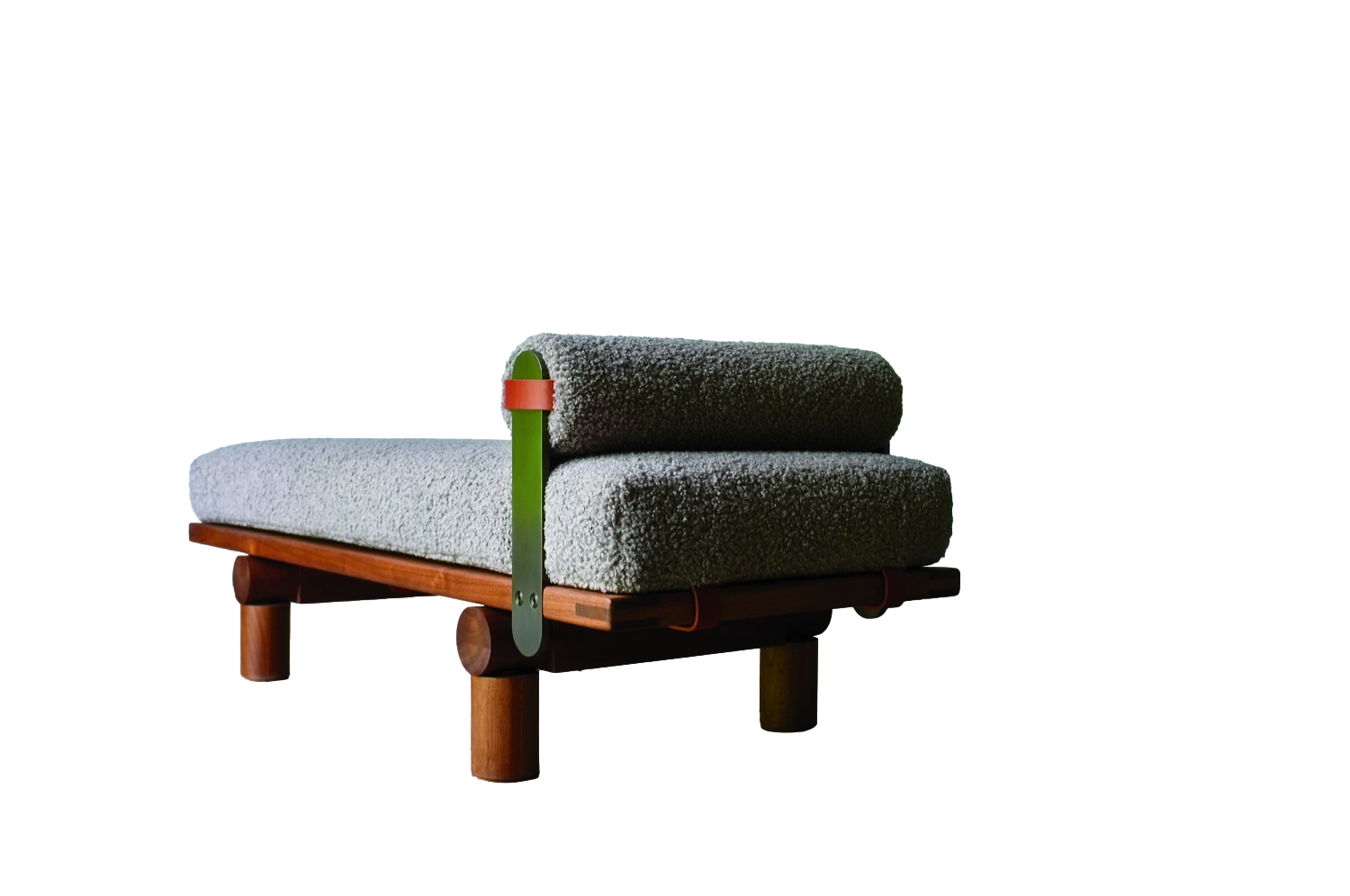 Plum, Michael Robbins
Plum, Michael Robbins
Woodworker Michael Robbins is the quintessential artisan from New York State’s Hudson Valley in that both his materials and methods pay homage to the area. In fact, he describes his style as “honest, playful, elegant and reflective of the aesthetic of the Hudson Valley surroundings”. Robbins crafts his furniture by hand but allows the wood he uses to help guide the look of a piece. (The studio offers eight standard finishes.) The Plum daybed, brought to life at Robbins’s workshop, exhibits his signature modern rusticity injected with a hint of whimsy thanks to the simplicity of its geometric forms. Around $4,275; MichaelRobbins.com
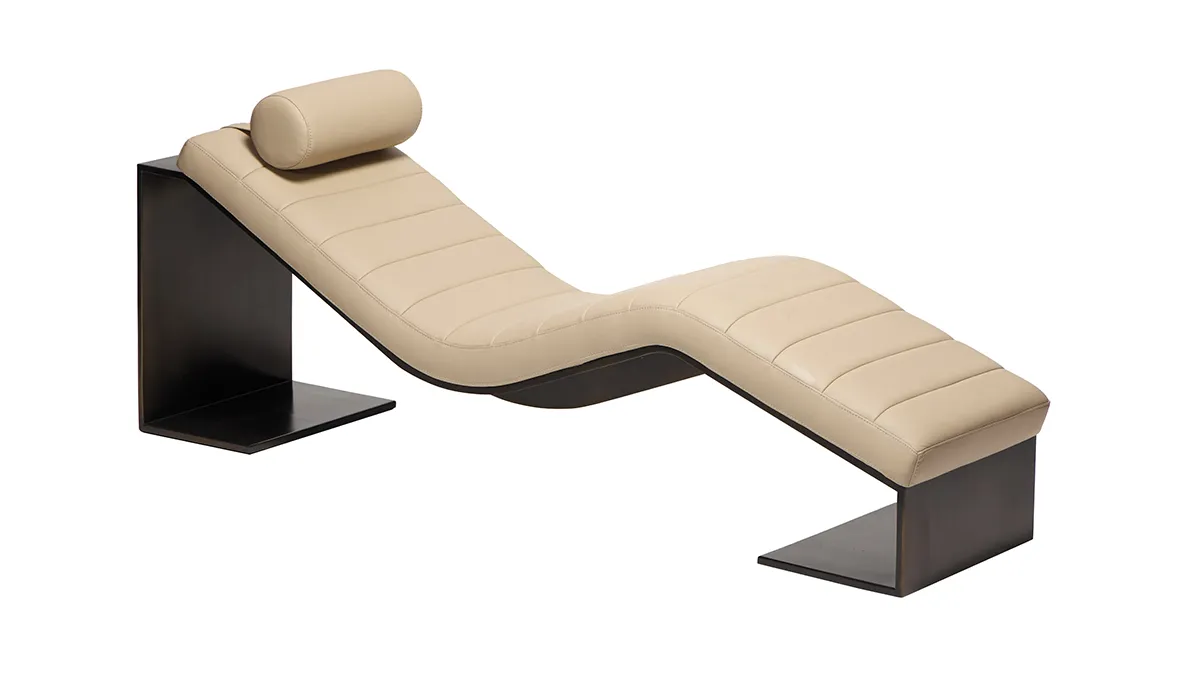
Kimani, Reda Amalou Design
French architect and designer Reda Amalou acknowledges the challenge of creating standout seating given the number of iconic 20th-century examples already in existence. Still, he persists—and prevails. The Kimani, a bent slash of a daybed in a limited edition of eight pieces, makes a forceful statement. Its leather cushion features a rolled headrest and rhythmic channel stitching reminiscent of that found on the seats of ’70s cars; visually, these elements anchor the slender silhouette atop a patinated bronze base with a sure-handed single line. The result: a seamless contour for the body. Around $33,530; RedaAmalou
Dune, Workshop/APD
From a firm known for crafting subtle but luxurious architecture and interiors, Workshop/APD’s debut furniture collection is on point. Among its offerings is the leather-wrapped Dune daybed. With classical and Art Deco influences, its cylindrical bolsters are a tactile celebration, and the peek of the curved satin-brass base makes for a sensual surprise. Associate principal Andrew Kline notes that the daybed adeptly bridges two seating areas in a roomy living space or can sit, bench-style, at the foot of a bed. From $13,040; Workshop/ APD
Sherazade, Edra
Designed by Francesco Binfaré, this sculptural, minimalist daybed—inspired by the rugs used by Eastern civilizations—allows for complete relaxation. Strength combined with comfort is the name of the game here. The Sherazade’s structure is made from light but sturdy honeycomb wood, while next-gen Gellyfoam and synthetic wadding aid repose. True to Edra’s amorphous design codes, it can switch configurations depending on the user’s mood or needs; for example, the accompanying extra pillows—one rectangular and one cylinder shaped— interchange to become armrests or backrests. From $32,900; Edra
You may also like.
By Josh Bozin
24/07/2024
22/07/2024
Watches & Wonders 2024 Showcase: Hermès
We head to Geneva for the Watches & Wonders exhibition; a week-long horological blockbuster featuring the hottest new drops, and no shortage of hype.
With Watches & Wonders 2024 well and truly behind us, we review some of the novelties Hermès presented at this year’s event.
—
HERMÈS
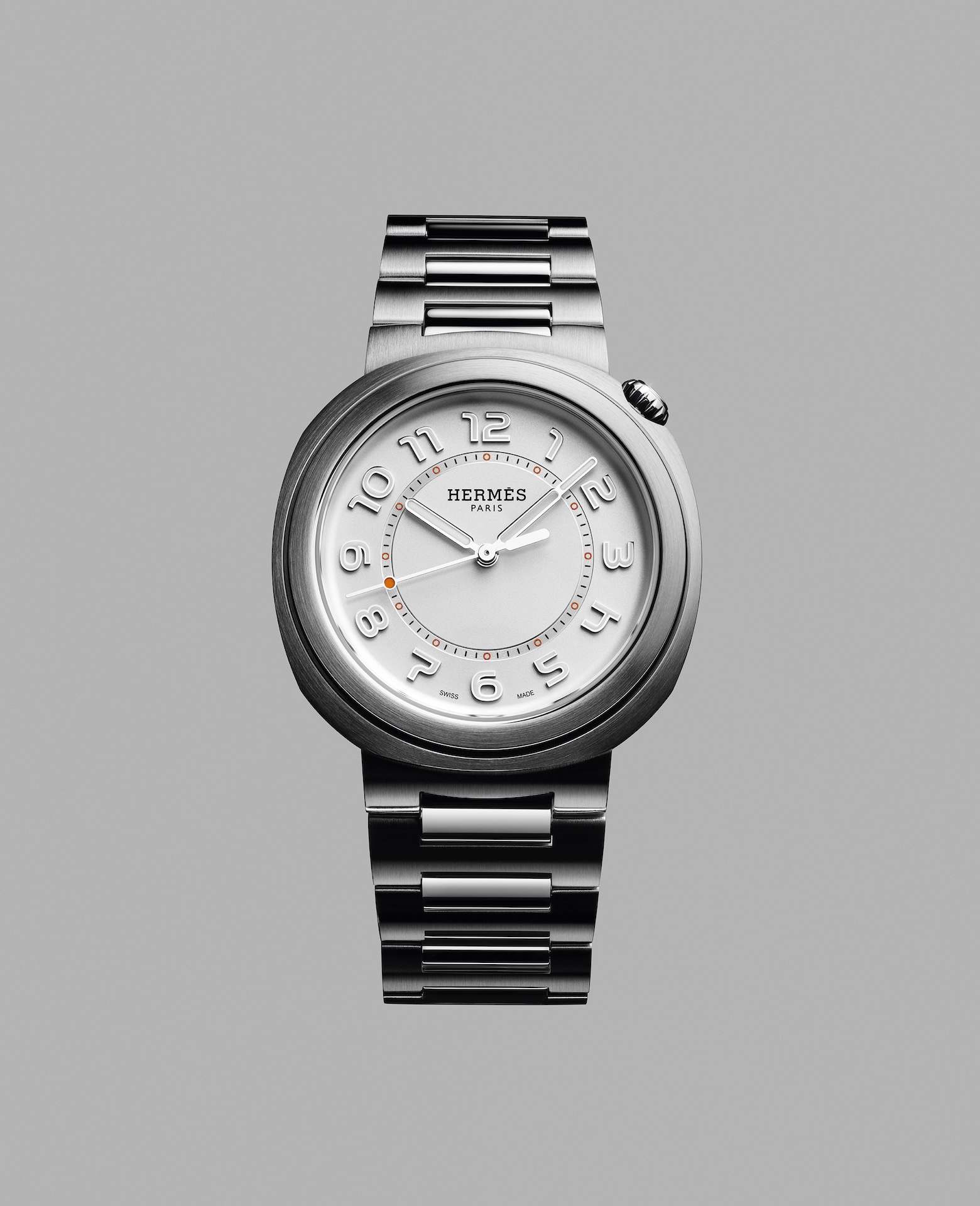
Moving away from the block colours and sporty aesthetic that has defined Hermès watches in recent years, the biggest news from the French luxury goods company at Watches & Wonders came with the unveiling of its newest collection, the Hermès Cut.
It flaunts a round bezel, but the case middle is nearer to a tonneau shape—a relatively simple design that, despite attracting flak from some watch aficionados, works. While marketed as a “women’s watch”, the Cut has universal appeal thanks to its elegant package and proportions. It moves away from the Maison’s penchant for a style-first product; it’s a watch that tells the time, not a fashion accessory with the ability to tell the time.
Hermès gets the proportions just right thanks to a satin-brushed and polished 36 mm case, PVD-treated Arabic numerals, and clean-cut edges that further accentuate its character. One of the key design elements is the positioning of the crown, boldly sitting at half-past one and embellished with a lacquered or engraved “H”, clearly stamping its originality. The watch is powered by a Hermès Manufacture movement H1912, revealed through its sapphire crystal caseback. In addition to its seamlessly integrated and easy-wearing metal bracelet, the Cut also comes with the option for a range of coloured rubber straps. Together with its clever interchangeable system, it’s a cinch to swap out its look.
It will be interesting to see how the Hermès Cut fares in coming months, particularly as it tries to establish its own identity separate from the more aggressive, but widely popular, Ho8 collection. Either way, the company is now a serious part of the dialogue around the concept of time.
—
Read more about this year’s Watches & Wonders exhibition at robbreport.com.au
You may also like.
22/07/2024
Living La Vida Lagerfeld
The world remembers him for fashion. But as a new tome reveals, the iconoclastic designer is defined as much by extravagant, often fantastical, homes as he is clothes.
“Lives, like novels, are made up of chapters”, the world-renowned bibliophile, Karl Lagerfeld, once observed.
Were a psychological-style novel ever to be written about Karl Lagerfeld’s life, it would no doubt give less narrative weight to the story of his reinvigoration of staid fashion houses like Chloe, Fendi and Chanel than to the underpinning leitmotif of the designer’s constant reinvention of himself.
In a lifetime spanning two centuries, Lagerfeld made and dropped an ever-changing parade of close friends, muses, collaborators and ambiguous lovers, as easily as he changed his clothes, his furniture… even his body. Each chapter of this book would be set against the backdrop of one of his series of apartments, houses and villas, whose often wildly divergent but always ultra-luxurious décor reflected the ever-evolving personas of this compulsively public but ultimately enigmatic man.
With the publication of Karl Lagerfeld: A Life in Houses these wildly disparate but always exquisite interiors are presented for the first time together as a chronological body of work. The book indeed serves as a kind of visual novel, documenting the domestic dreamscapes in which the iconic designer played out his many lives, while also making a strong case that Lagerfeld’s impact on contemporary interior design is just as important, if not more so, than his influence on fashion.
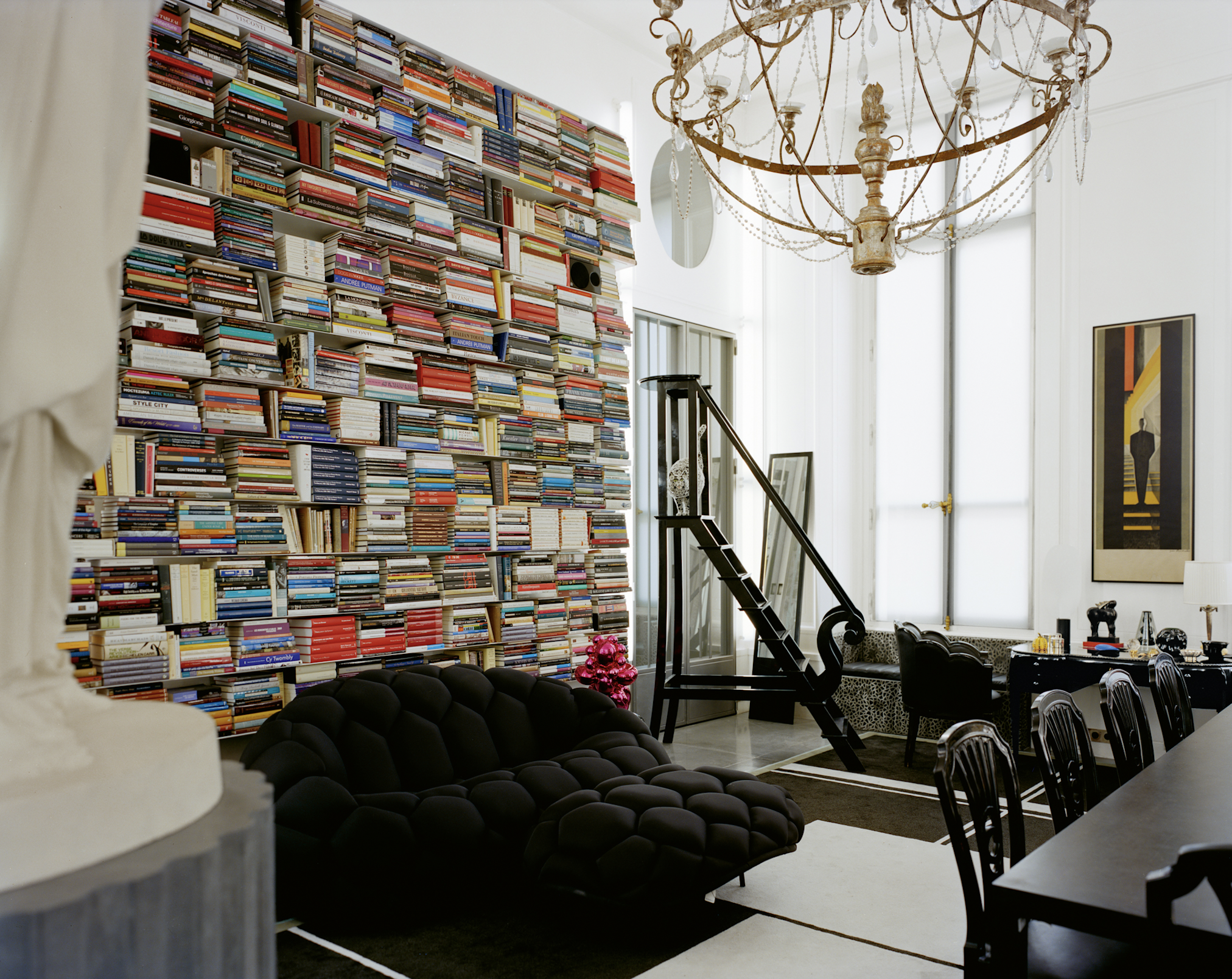
In fact, when the first Lagerfeld interior was featured in a 1968 spread for L’OEil magazine, the editorial describes him merely as a “stylist”. The photographs of the apartment in an 18th-century mansion on rue de Université, show walls lined with plum-coloured rice paper, or lacquered deepest chocolate brown in sharp contrast to crisp, white low ceilings that accentuated the horizontality that was fashionable among the extremely fashionable at the time. Yet amid this setting of aggressively au courant modernism, the anachronistic pops of Art Nouveau and Art Deco objects foreshadow the young Karl’s innate gift for creating strikingly original environments whose harmony is achieved through the deft interplay of contrasting styles and contexts.
Lagerfeld learned early on that presenting himself in a succession of gem-like domestic settings was good for crafting his image. But Lagerfeld’s houses not only provided him with publicity, they also gave him an excuse to indulge in his greatest passion. Shopping!
By 1973, Lagerfeld was living in a new apartment at Place Saint–Sulpice where his acquisition of important Art Deco treasures continued unabated. Now a bearded and muscular disco dandy, he could most often be found in the louche company of the models, starlets and assorted hedonistic beauties that gathered around the flamboyant fashion illustrator Antonio Lopez. Lagerfeld was also in the throes of a hopeless love affair with Jacques de Bascher whose favours he reluctantly shared with his nemesis Yves Saint Laurent.
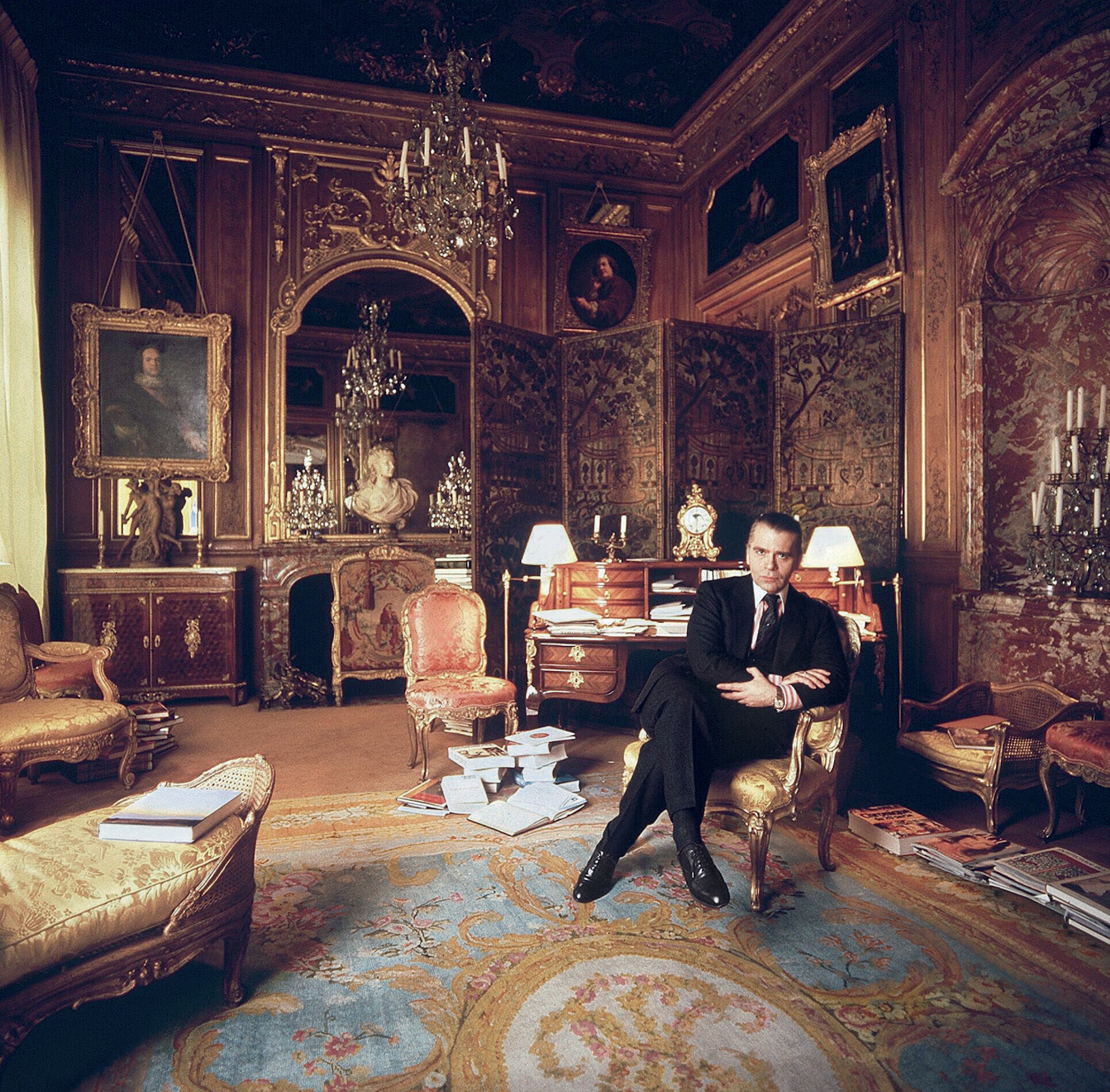
He painted the rooms milky white and lined them with specially commissioned carpets—the tawny patterned striations of which invoked musky wild animal pelts. These lent a stark relief to the sleek, machine-age chrome lines of his Deco furnishings. To contemporary eyes it remains a strikingly original arrangement that subtly conveys the tensions at play in Lagerfeld’s own life: the cocaine fuelled orgies of his lover and friends, hosted in the pristine home of a man who claimed that “a bed is for one person”.
In 1975, a painful falling out with his beloved Jacques, who was descending into the abyss of addiction, saw almost his entire collection of peerless Art Deco furniture, paintings and objects put under the auctioneer’s hammer. This was the first of many auction sales, as he habitually shed the contents of his houses along with whatever incarnation of himself had lived there. Lagerfeld was dispassionate about parting with these precious goods. “It’s collecting that’s fun, not owning,” he said. And the reality for a collector on such a Renaissance scale, is that to continue buying, Lagerfeld had to sell.
Of all his residences, it was the 1977 purchase of Hôtel Pozzo di Borgo, a grand and beautifully preserved 18th-century house, that would finally allow him to fulfill his childhood fantasies of life in the court of Madame de Pompadour. And it was in this aura of Rococó splendour that the fashion designer began to affect, along with his tailored three-piece suits, a courtier’s ponytailed and powdered coif and a coquettish antique fan: marking the beginning of his transformation into a living, breathing global brand that even those with little interest in fashion would immediately recognise.
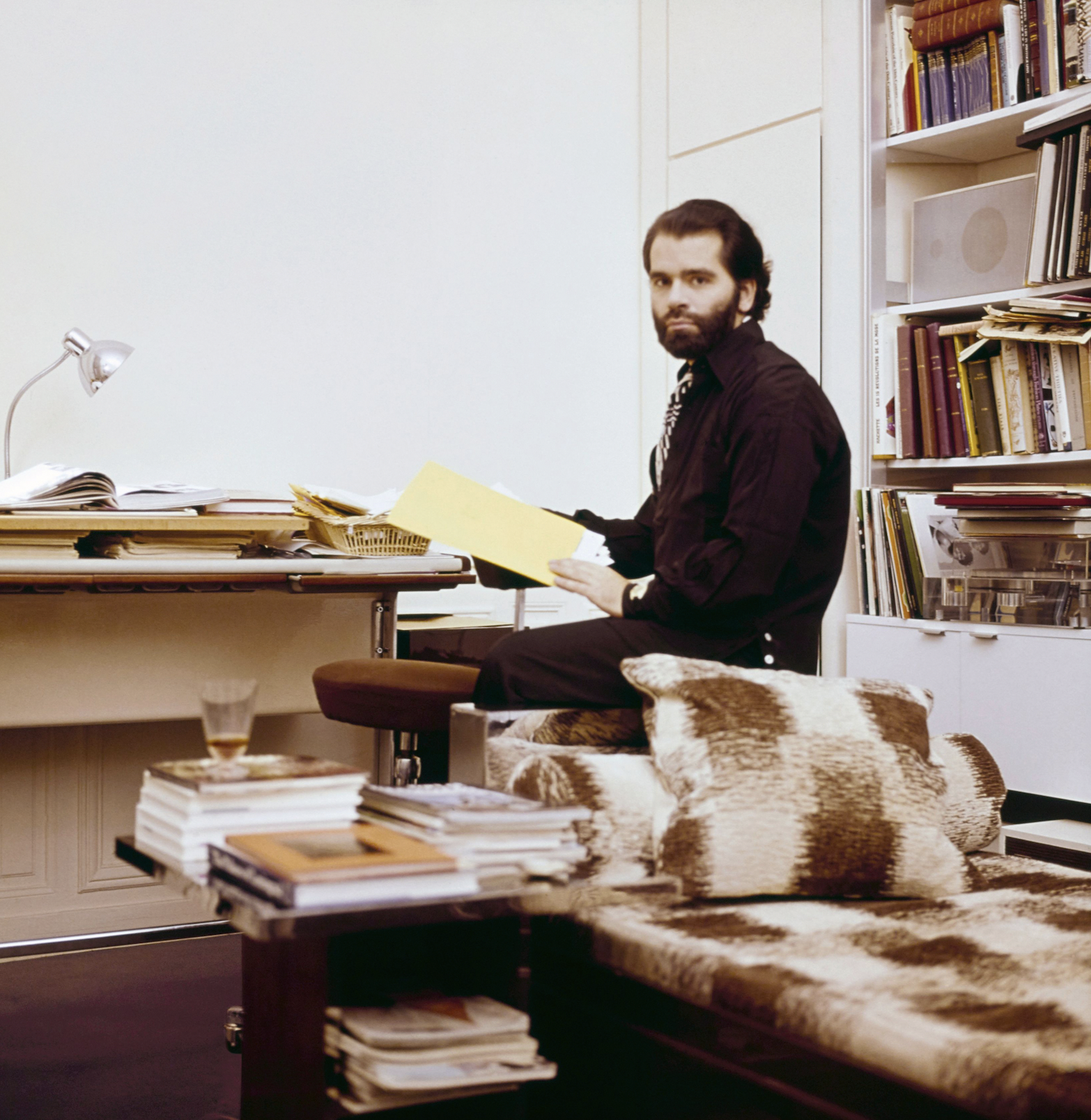
Lagerfeld’s increasing fame and financial success allowed him to indulge in an unprecedented spending frenzy, competing with deep-pocketed institutions like the Louvre to acquire the finest, most pedigreed pearls of the era—voluptuously carved and gilded bergères; ormolu chests; and fleshy, pastel-tinged Fragonard idylls—to adorn his urban palace. His one-time friend André Leon Talley described him in a contemporary article as suffering from “Versailles complex”.
However, in mid-1981, and in response to the election of left-wing president, François Mitterrand, Lagerfeld, with the assistance of his close friend Princess Caroline, became a resident of the tax haven of Monaco. He purchased two apartments on the 21st floor of Le Roccabella, a luxury residential block designed by Gio Ponti. One, in which he kept Jacques de Bascher, with whom he was now reconciled, was decorated in the strict, monochromatic Viennese Secessionist style that had long underpinned his aesthetic vocabulary; the other space, though, was something else entirely, cementing his notoriety as an iconoclastic tastemaker.
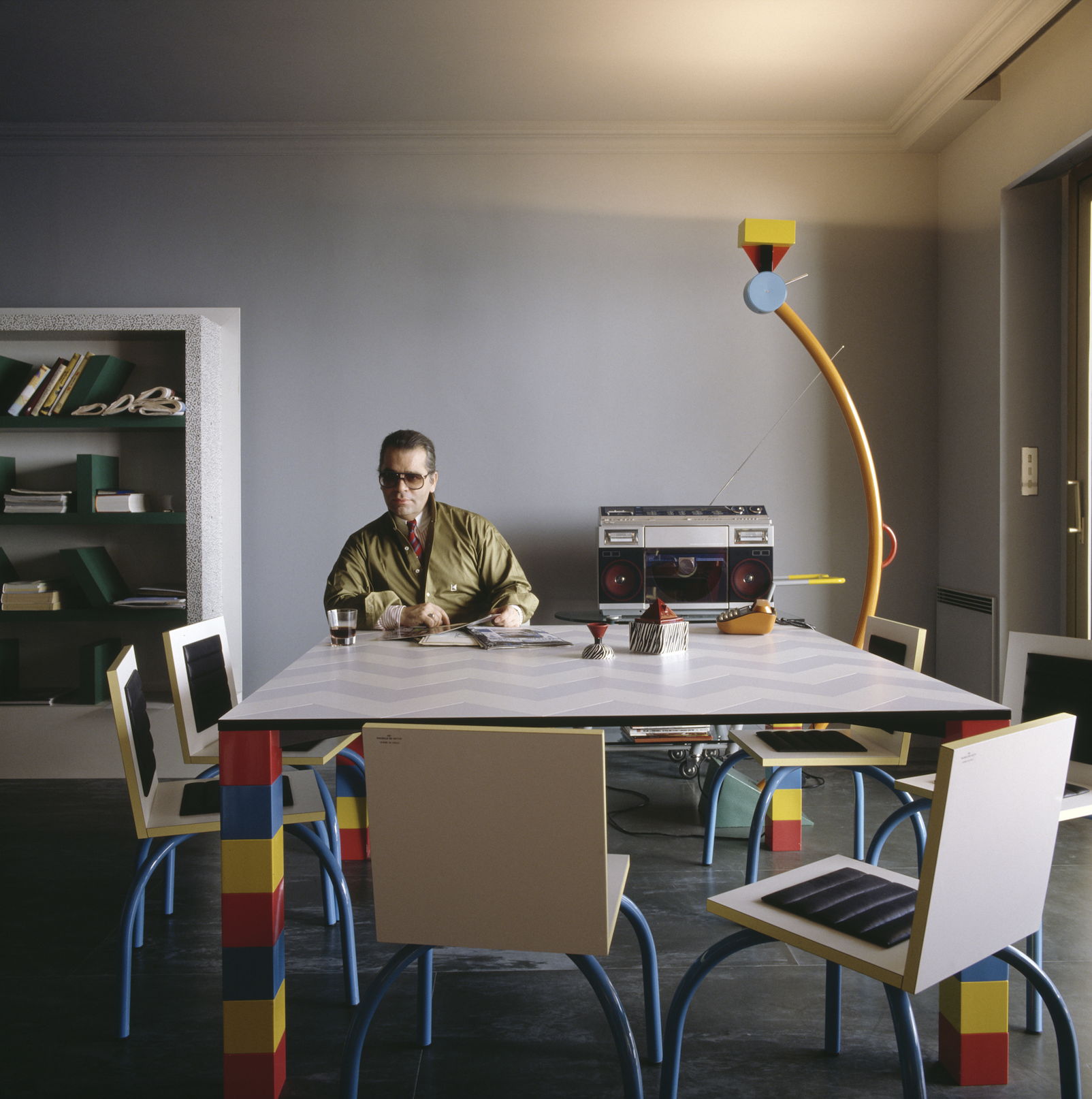
Lagerfeld had recently discovered the radically quirky designs of the Memphis Group led by Ettore Sottsass, and bought the collective’s entire first collection and had it shipped to Monaco. In a space with no right angles, these chaotically colourful, geometrically askew pieces—centred on Masanori Umeda’s famous boxing ring—gave visitors the disorientating sensation of having entered a corporeal comic strip. By 1991, the novelty of this jarring postmodern playhouse had inevitably worn thin and once again he sent it all to auction, later telling a journalist that “after a few years it was like living in an old Courrèges. Ha!”

In 1989, de Bascher died of an AIDS-related illness, and while Lagerfeld’s career continued to flourish, emotionally the famously stoic designer was struggling. In 2000, a somewhat corpulent Lagerfeld officially ended his “let them eat cake” years at the Hôtel Pozzo di Borgo, selling its sumptuous antique fittings in a massive headline auction that stretched over three days. As always there were other houses, but now with his longtime companion dead, and his celebrity metastasising making him a target for the paparazzi, he began to look less for exhibition spaces and more for private sanctuaries where he could pursue his endless, often lonely, work.
His next significant house was Villa Jako, named for his lost companion and built in the 1920s in a nouveau riche area of Hamburg close to where he grew up. Lagerfeld shot the advertising campaign for Lagerfeld Jako there—a fragrance created in memorial to de Bascher. The house featured a collection of mainly Scandinavian antiques, marking the aesthetic cusp between Art Nouveau and Art Deco. One of its rooms Lagerfeld decorated based on his remembrances of his childhood nursery. Here, he locked himself away to work—tellingly—on a series of illustrations for the fairy tale, The Emperor’s New Clothes. Villa Jako was a house of deep nostalgia and mourning.
But there were more acts—and more houses—to come in Lagerfeld’s life yet. In November 2000, upon seeing the attenuated tailoring of Hedi Slimane, then head of menswear at Christian Dior, the 135 kg Lagerfeld embarked on a strict dietary regime. Over the next 13 months, he melted into a shadow of his former self. It is this incarnation of Lagerfeld—high white starched collars; Slimane’s skintight suits, and fingerless leather gloves revealing hands bedecked with heavy silver rings—that is immediately recognisable some five years after his death.
The 200-year-old apartment in Quái Voltaire, Paris, was purchased in 2006, and after years of slumber Lagerfeld—a newly awakened Hip Van Winkle—was ready to remake it into his last modernist masterpiece. He designed a unique daylight simulation system that meant the monochromatic space was completely without shadows—and without memory. The walls were frosted and smoked glass, the floors concrete and silicone; and any hint of texture was banned with only shiny, sleek pieces by Marc Newson, Martin Szekely and the Bouroullec Brothers permitted. Few guests were allowed into this monastic environment where Lagerfeld worked, drank endless cans of Diet Coke and communed with Choupette, his beloved Birman cat, and parts of his collection of 300,000 books—one of the largest private collections in the world.
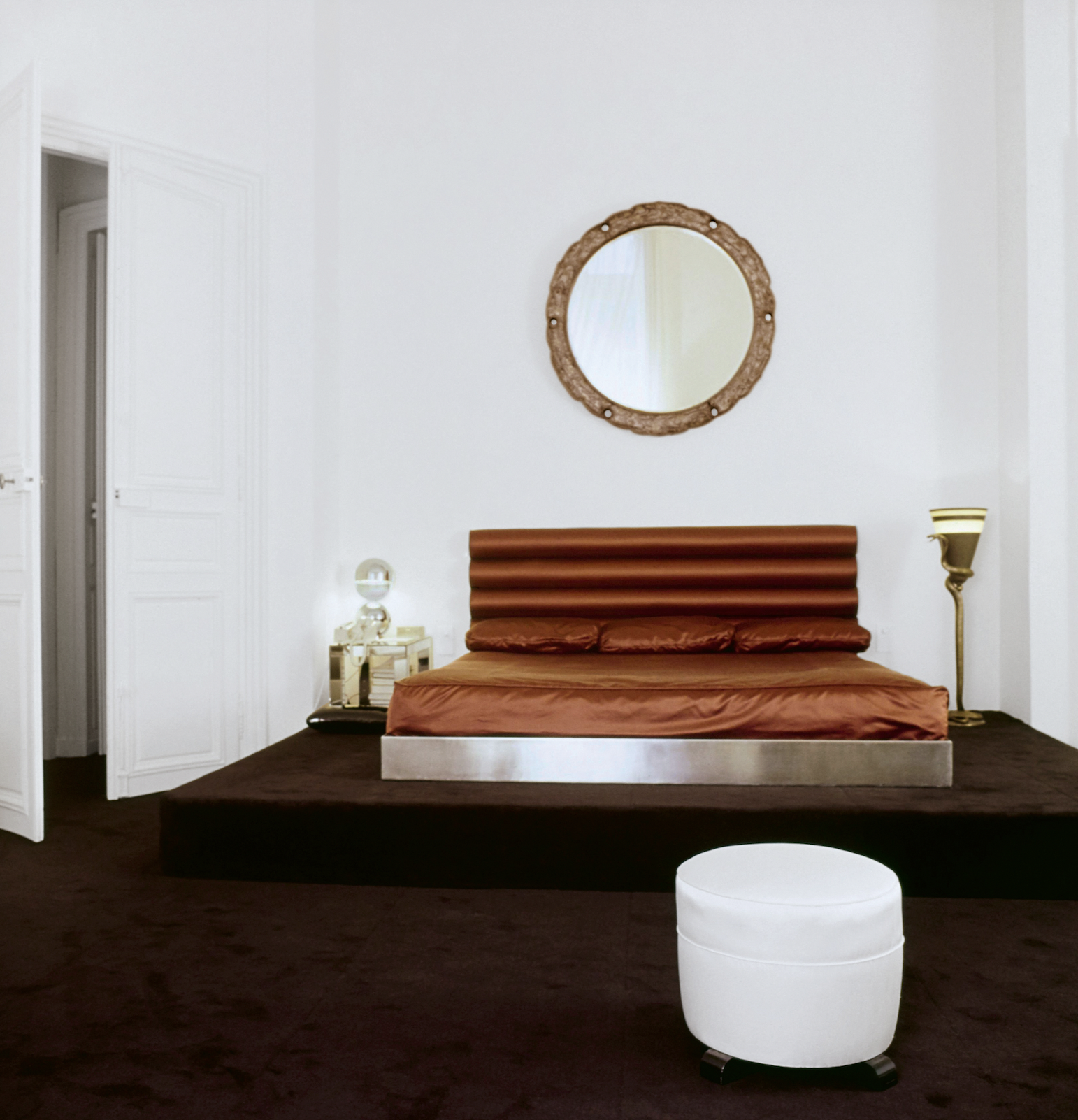
Lagerfeld died in 2019, and the process of dispersing his worldly goods is still ongoing. The Quái Voltaire apartment was sold this year for US$10.8 million (around $16.3 million). Now only the rue de Saint-Peres property remains within the Lagerfeld trust. Purchased after Quái Voltaire to further accommodate more of his books—35,000 were displayed in his studio alone, always stacked horizontally so he could read the titles without straining his neck—and as a place for food preparation as he loathed his primary living space having any trace of cooking smells. Today, the rue de Saint-Peres residence is open to the public as an arts performance space and most fittingly, a library.
You may also like.
By Josh Bozin
24/07/2024
Watch This Space: Mike Nouveau
Meet the game-changing horological influencers blazing a trail across social media—and doing things their own way.
In the thriving world of luxury watches, few people own a space that offers unfiltered digital amplification. And that’s precisely what makes the likes of Brynn Wallner, Teddy Baldassarre, Mike Nouveau and Justin Hast so compelling.
These thought-provoking digital crusaders are now paving the way for the story of watches to be told, and shown, in a new light. Speaking to thousands of followers on the daily—mainly via TikTok, Instagram and YouTube—these progressive commentators represent the new guard of watch pundits. And they’re swaying the opinions, and dollars, of the up-and-coming generations who now represent the target consumer of this booming sector.
—
MIKE NOUVEAU

Can we please see what’s on the wrist? That’s the question that catapulted Mike Nouveau into watch stardom, thanks to his penchant for highlighting incredibly rare timepieces across his TikTok account of more than 400,000 followers. When viewing Nouveau’s attention-grabbing video clips—usually shot in a New York City neighbourhood—it’s not uncommon to find him wrist-rolling some of the world’s rarest timepieces, like the million-dollar Cartier Cheich (a clip he posted in May).
But how did someone without any previous watch experience come to amass such a cult following, and in the process gain access to some of the world’s most coveted timepieces? Nouveau admits had been a collector for many years, but moved didn’t move into horology full-time until 2020, when he swapped his DJing career for one as a vintage watch specialist.
“I probably researched for a year before I even bought my first watch,” says Nouveau, alluding to his Rolex GMT Master “Pepsi” ref. 1675 from 1967, a lionised timepiece in the vintage cosmos. “I would see deals arise that I knew were very good, but they weren’t necessarily watches that I wanted to buy myself. I eventually started buying and selling, flipping just for fun because I knew how to spot a good deal.”
Nouveau claims that before launching his TikTok account in the wake of Covid-19, no one in the watch community knew he existed. “There really wasn’t much watch content, if any, on TikTok before I started posting, especially talking about vintage watches. There’s still not that many voices for vintage watches, period,” says Nouveau. “It just so happens that my audience probably skews younger, and I’d say there are just as many young people interested in vintage watches as there are in modern watches.”
View this post on Instagram
Nouveau recently posted a video to his TikTok account revealing that the average price of a watch purchased by Gen Z is now almost US$11,000 (around $16,500), with 41 percent of them coming into possession of a luxury watch in the past 12 months.
“Do as much independent research as you can [when buying],” he advises. “The more you do, the more informed you are and the less likely you are to make a mistake. And don’t bring modern watch expectations to the vintage world because it’s very different. People say, ‘buy the dealer’, but I don’t do that. I trust myself and myself only.”
—
Read more about the influencers shaking up horology here with Justin Hast, Brynn Wallner and Teddy Baldassare.
You may also like.
By Josh Bozin
24/07/2024
This Pristine 1960 Ferrari 250 Spider Could Fetch $24 Million at Auction
The car wears the same colours and has the same engine it left the factory with.
Some Ferraris are just a little bit more important than others.
Take, for example, the 1960 250 GT SWB California that RM Sotheby’s is auctioning off during this year’s Monterey Car Week. Any example of the open-top beauty would attract interest, but this one just so happens to be the first one that was built.
The 250 is one of the most legendary series of cars in Ferrari history. Between 1952 and 1964, the company released 21 different 250 models—seven for racetracks, 14 for public roads—of which the “Cali Spider” might be the most well regarded, thanks to its potent V-12 and a Pininfarina-penned design that is one of the most beautiful bodies to grace an automobile. The roadster, which was specifically built for the U.S., made its debut in 1957 as a long-wheel-base model (LWB), but it wasn’t until the SWB model debut in 1960 that it became clear how special it was. This example isn’t just the first to roll off the line. It’s the actual car that was used to introduce the world to the model at the 1960 Geneva Motor Show.
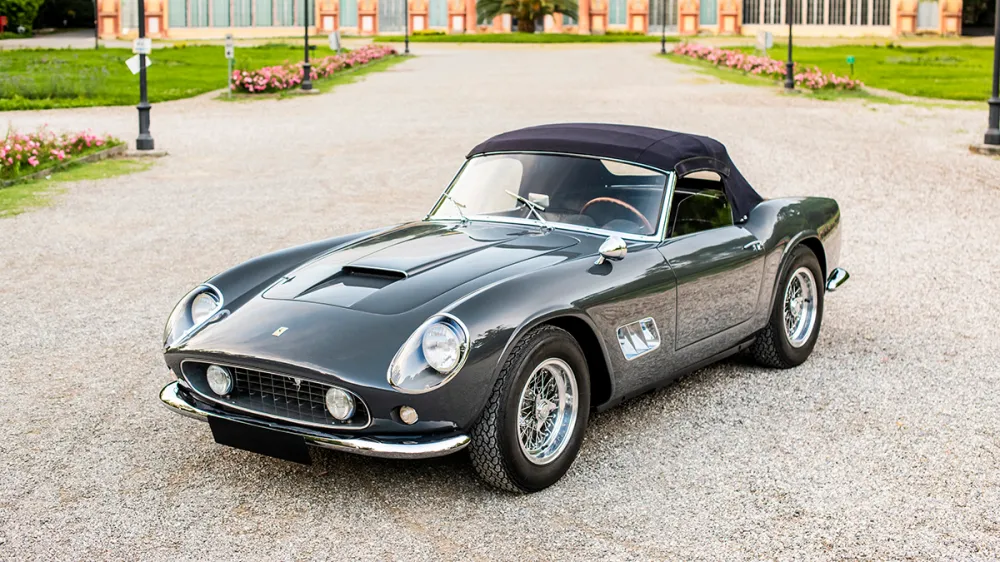
Just 56 examples of the 250 GT SWB California Spider would be built by Scaglietti during the three years it was in production. The first of those, chassis 1795 GT, is finished in a glossy coat of Grigio. The two-door had a red leather interior at Geneva but was returned to the factory and re-outfitted with black leather upholstery before being delivered to its original owner, British race car driver John Gordon Bennet. Six-and-a-half decades later the car looks identical to how it did when it left the factory the second time.
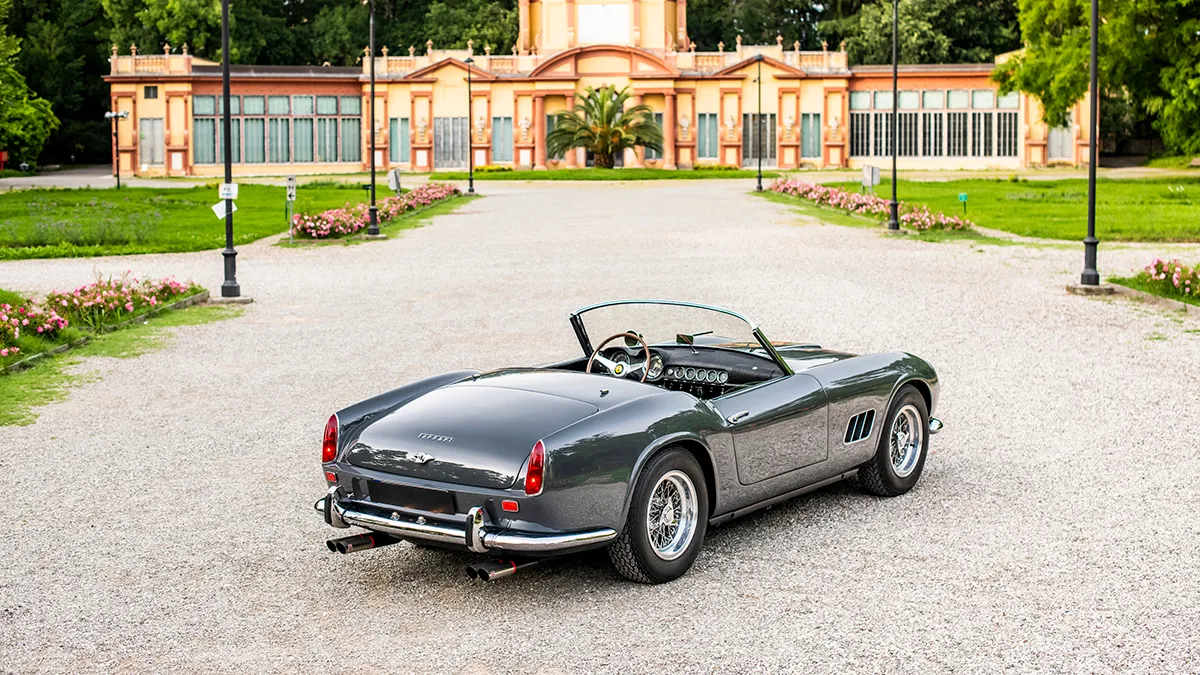
In addition to its original bodywork, the chassis 1795 GT features its original engine, gearbox, and rear axle. That mill is the competition-spec Tipo 168, a 3.0-litre V-12 that makes 196.1 kW. That may not sound like much by today’s standards, but, when you consider that the 250 GT SWB California Spider tips the scales around 952 kilograms, it’s more than enough.
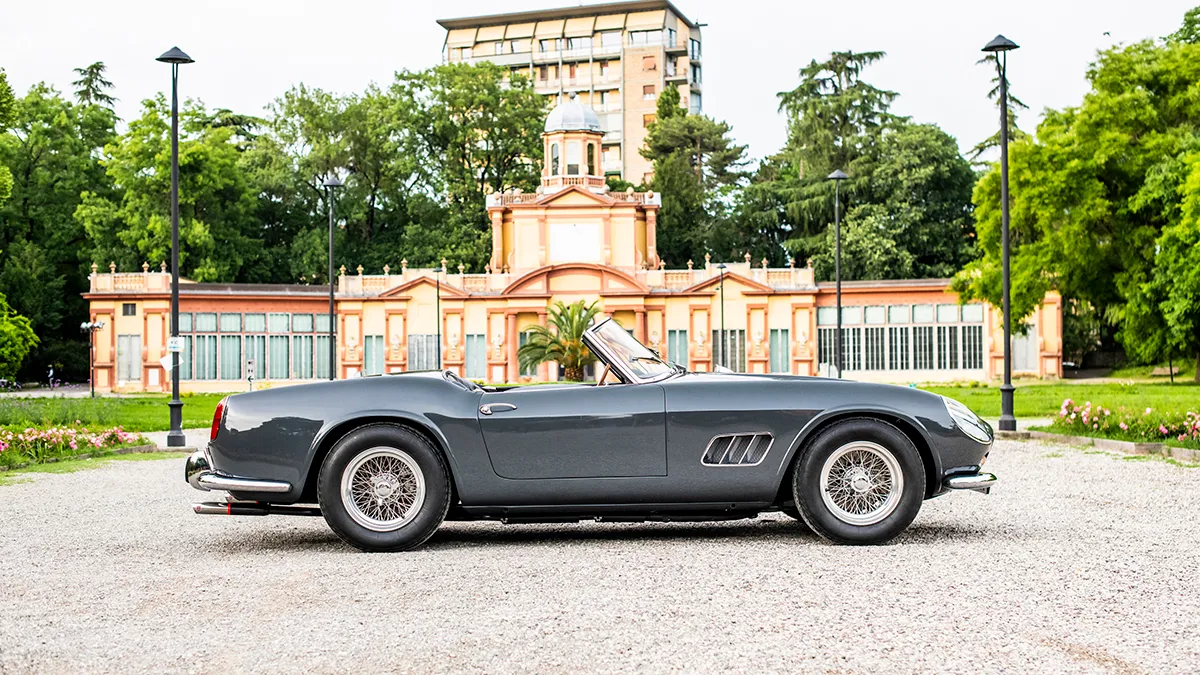
The first 250 GT SWB California Spider is scheduled to go up for bid during RM Sotheby’s annual Monterey Car Week auction, which runs from Thursday, August 15, to Saturday, August 17. Unsurprisingly, the house has quite high hopes for the car. The car carries an estimate of between $24 million and $26 million, which could make it one of the most expensive cars ever sold at auction.
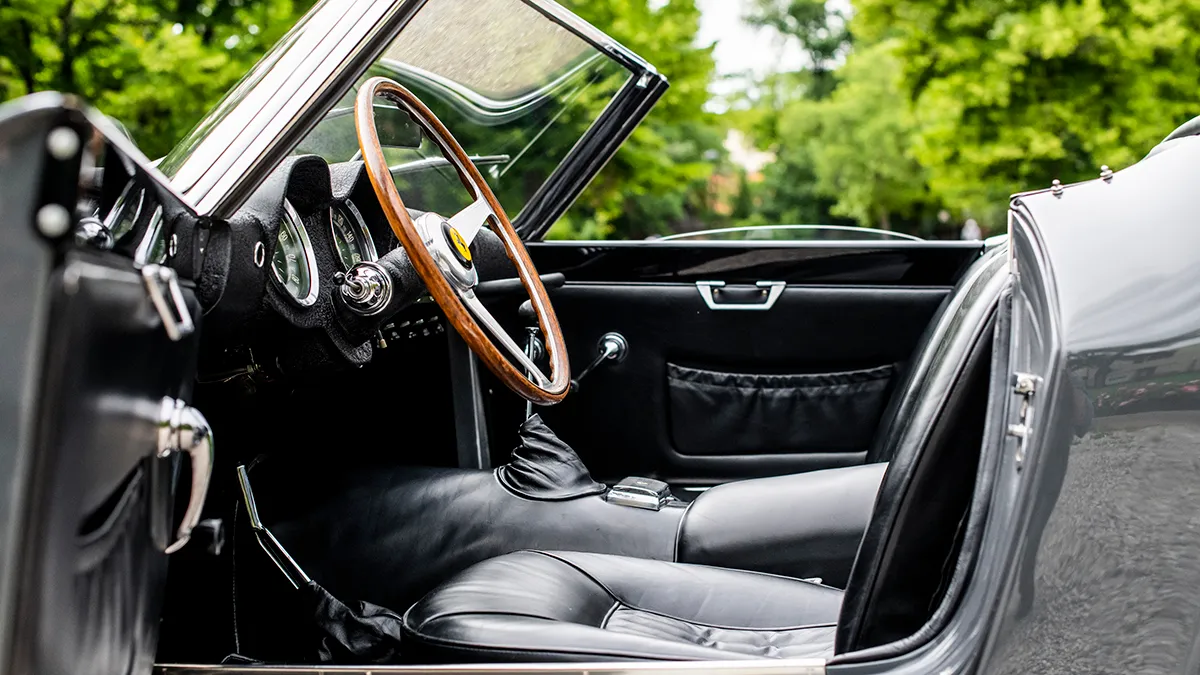
You may also like.
By Josh Bozin
24/07/2024









